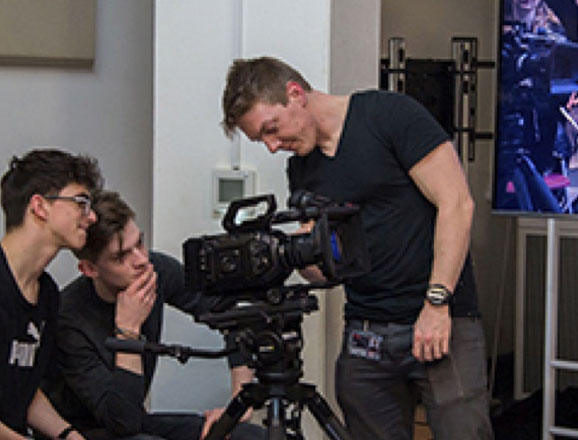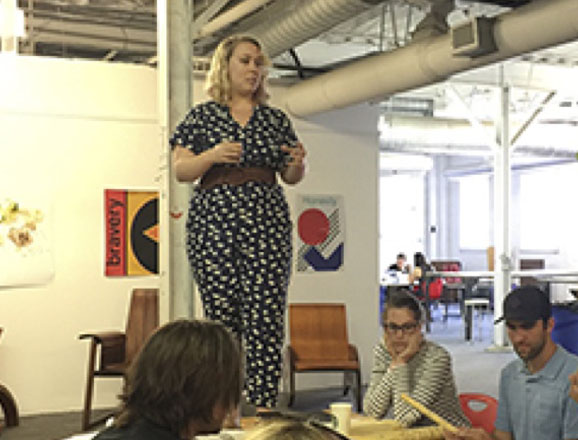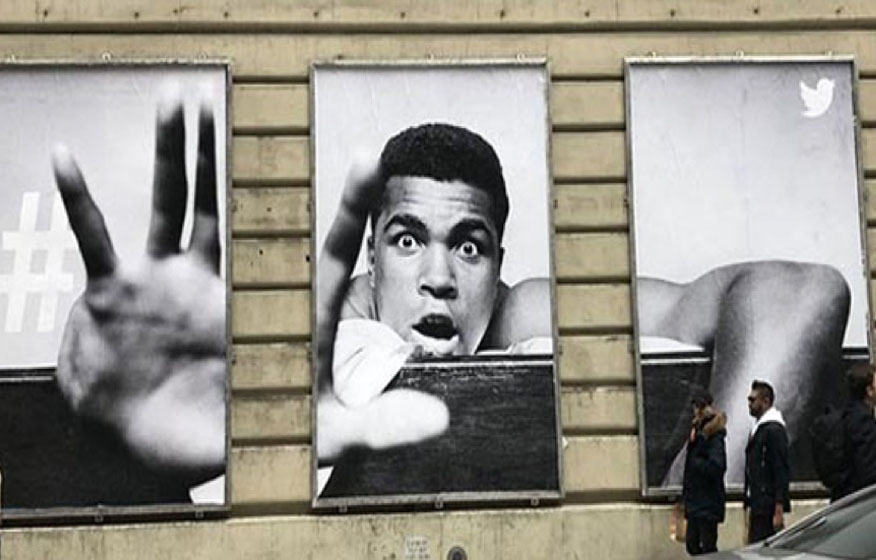How to Become a Professional STRATEGIST OR PLANNER in 2025
The ultimate guide: everything you need to know about building a career in strategy and planning (how to make money AND a difference).

Learning and information.
Get paid to learn about the world, and filter that new information into brilliant insights.
Decipher Pop Culture.
Strategists need to have their finger firmly on the pulse of culture. It's their job to keep the whole team ahead of the curve. That means that keeping up with the Kardashians (and D'Amelio's, and Paul's, and more) isn't just a fun diversion...it's crucial work that can help your team stand out from the pack.
Separate the forest from the trees.
As a strategist, your work is future-focused. The whole game is decipher what's a trend vs what's a fad—what's a real insight vs what's a fun little observation. Talk about a brain-teasing challenge. When you get it right, there's no better feeling in the world.
Work with brilliant minds.
Work with talented and passionate creative people from all walks of life, and learn to elevate your work through the magic of creative collaboration.
Break down walls.
The best strategists in the world understand that implementing ideas requires teamwork. Teamwork means everyone needs to row in the same direction. Strategists help bridge the divides between creative and business silos, and point the whole team toward true north.
Money in the bank.
At the end of the day, a career can be fun, fulfilling, creative, etc...but if it isn't bringing in the cheddar, who is going to pay the rent? Good news: strategists. Entry-level strategy jobs pay more than many other careers...and the best-of-the-best are taking home C-suite-level paychecks.
Fundamentally, the role of a strategist is to help solve business problems with the power of creativity.
On any given day, they can be writing a brief, briefing a team, conducting or moderating qualitative or quantitative research…but the crux of strategy is to understand culture. Understanding what’s happening in the category of the brand that you’re working on. Empathizing and understanding people as much as possible and helping crack that narrative that the brand wants to tell to the world.
If you love to people watch, nerd out over big data, and hate to take no for an answer, you just might be a strategist. With your knack for research, natural sense of curiosity, and a touch of stubbornness, you are the ultimate problem solver. Not only do you have the unique ability to analyze any client request and transform it into a coherent brief, but you’re also a key player when it comes to shaping a brand’s identity.
Put simply, strategy is a career for deep thinkers, who always want to ask the question ‘Why’.
Are you inquisitive, intuitive, logical, and creative? Do you like researching the answers to problems? Do you approach life strategically? If this sounds like you, you’re probably an account planner.
A Day in the Life of a Strategist



The Issue & The Brief
What key issue is the brand facing? Is it an issue that can be solved by advertising? A planner’s first job is to ask the right questions. As a strategist, you know advertising is a planned, not a haphazard, activity. Winning strategies are dependent on rigorous consumer market analysis.
Generally, this means that your work will follow a broad, six-step strategic foundation: the client briefing, asking the right questions, exploring the broad market/business dynamics, conducting a thorough brand audit, asking candid questions, carrying out a competitive analysis of other key brands in the category, establishing target audience segments and consumer purchasing dynamics, and defining the role of advertising and which models of advertising are applicable.
The briefing must inform, obviously. More importantly, the briefing must inspire. This process is the pivotal point from analysis of data to the start of creative activity. Your creative briefing becomes the tool to unleashing the creative forces of the creative director and the team of art director and copywriter.
Great briefs answer some essential questions.
- Who is the intended audience?
- Which other brands are the competitive set that the client will be setting themselves apart from?
- What’s your brand’s point of view? How do they differentiate from the rest of the pack?
- How can we “triangulate” the three previous prompts, writing a single line that wraps all the thoughts together?
- What’s the business objective here?
At the centre of it all is an insight. Born from a mixture of qualitative and qualitative research, your insight is what allows the creative team to build a campaign or brand or ad or story that speaks deeply and profoundly to your audience.
A good insight will reframe the creative exercise. It’s on step further than a simple observation (say, in the case of Snickers, that people tend to snack on a Snickers between meals). Your insight takes it to the next level by encouraging action. For Snickers, think “You’re not you when you’re hungry”.
Once you have your insight, the rest of the brief becomes a way to communicate that nugget of gold to your creative team. The final brief is a contract between strategist and creative team. It’s a way to evaluate creative work, to look at the work through the lens of the audience, and help to take your (and everyone else’s) ego out of the equation.
Want to learn more about the art of the brief? Check out this brilliant video from Bassett & Partners.
What's in a title?
“So…what do you do?”
It’s one of America’s favorite questions…asked at parties, gas stations, coffee shops, parks all around the nation.
For strategists, it can be more than a little fraught.
Since its arrival in the United States over 35 years ago, Account Planning has been accepted as a necessary advertising discipline. The name? Not so much…
Just so we’re all the same page, here’s a pithy definition of the role:
account planner [uh–kount plan-er] n.: someone who deeply understands the consumer in order to help create poignant and relevant work.
Now, every account planner has their own description of the what it is that they do. Krissy and I have heard planners refer to their profession as someone who “writes love letters to creatives,” “connects life’s dots,” or “finds golden nuggets of truth.”
Likewise, most people in this role prefer a title other than “account planner.” While “brand strategist” has become pretty common in the US, some have opted for more unique titles. Because the advertising industry champions the “out-there,” there’s a tendency to push the envelope just for the sake of pushing the envelope. A quick cyber-stalk on LinkedIn will show professionals declaring to be Swiss Army tools and professional ninjas.
To me this feels like a classic case of industry overanalysing. I understand, we’re all about nuance and hitting all the right words – oh trust me I’ve been there. But there comes a point in which the consumer will not care. And for a job that’s meant to simplify, I have the feeling we’re doing a great job in making it hella more complicated than it should be. Because all this leads to is a bunch of Reddit pages with very sane people trying to figure out what the hell is the difference between one and the other. Whether they should be applying to be a strategist. Or a planner. Or a strategic planner. When they’re all really likeAm I a Strategist after all? Am I really a Planner in disguise and nobody told me? Are they even mutually exclusive things? Will I be rebranded to Thinker in no time? It’s embarrassing. We’re only a few steps away from the digital ninja growth-hackers who plague LinkedIn. All this navel-gazing and squabbling exposes our specialism’s biggest problem: self-obsession. Our job was created to bring the consumer into the room. To burst the adland bubble. But instead we’re focusing our time and effort on ourselves. We would make far better work if we were half as interested in our consumers’ lives as we are in our own. At the end of the day, call it what you want. It doesn’t matter. The job description underneath won’t change. But be ready to do both the big and smaller thinking that comes with it. Because that’s what will really get us solving the work, instead of getting lost in advertising jargon.


Why Be A Strategist?

The role of a strategist is often one of the more desirable positions in an organization. They have a big picture perspective on the overall vision of the team, and are often involved in some of the most exciting initiatives. They also work closely with key stakeholders including high-level decision-makers.
Good strategy takes into account all stakeholders, risk factors, and deliverables. The goal is to focus the energy of the creative team. If the planner does their job, the team’s priorities will reflect the most important aspects of the problem at hand.

If you love to people watch, nerd out over big data, and hate to take no for an answer, you just might be a strategist. With your knack for research, natural sense of curiosity, and a touch of stubbornness, you are the ultimate problem solver. Not only do you have the unique ability to analyze any client request and transform it into a coherent brief, but you’re also a key player when it comes to shaping a brand’s identity.

The Strategic Planner takes the business problem at hand, develops a brilliant insight, and comes up with the project brief. The make simplicity from complexity. They make order from chaos.
Sound simple? It’s incredibly valuable (and highly-skilled) work. The strategist is the bridge between the client and the creative team: the all-important communicator, researcher, and planner that matches complex problems to potential solutions. The quantitative and qualitative research they do leads to work that truly pushes the envelope—it’s the solid foundation that allows a creative team to make incredible leaps.
And by clarifying the project brief with the client, Strategic Planners ensure that what could be a complex and confusing affair instead has clear guidelines, clear strategy, and a clear objective. And finally, when things are all said and done, it’s the Strategic Planner (along with a client) who determines if the effort was a success.
Fundamentally, the Strategic Planner looks ahead and prepares for a far-off future…while ensuring the team is doing what needs to be done today. They are often skilled forecasters, researchers, communicators, and leaders. It’s a multi-faceted position.
The Career of a Strategist
Strategic Planners are the North Star that guide the creative ship. They’re logical, creative, inquisitive and intuitive. They find insight through research, then turn around and present to the client like a rockstar. Planners help demystify the consumer and direct ideas when the client and creative team need to reach. After conducting focus groups, man-on-the-street interviews and surveys, a strategic planner takes that info and pulls it apart into a million pieces. Then they put it all back together writing a brief the art director and copywriter can use to concept ideas.
Throughout the creative process, the planner is there to encourage and refocus helping everyone stay “on brief”. At the end, their navigation through rough waters result in a campaign that hits the target market and is not only funny, wistful or entertaining but is strategically sound and solves the client’s problem.
Many strategic planners are in leadership roles. Those who are not in a leadership role must still possess strong leadership skills to help peers and supervisors reach a common goal that supports a company’s overall objectives. Strategic planners who are in leadership positions often oversee a strategy team and must be able to motivate and inspire their team to complete goals.
- Traditional agencies (i.e. Leo Burnett)
- Innovation labs (i.e Sylvain Labs and WhatIf)
- Consultancies (i.e. big like McKinsey to small like Triptk)
- Client-side (i.e. Chobani)
- Advising brands on platforms (i.e. Twitter)
- Leading creative agencies (Ogilvy, McCann, and R/GA come to mind)
- Consumer brands with a focus on communication (Nike, Disney, Coke, and more)
- Freelancing (with all the freedom, headaches, and excitement that come with it)
The most important thing when you’re starting out is to get hands-on experience.
Later in your career, when you’re looking to become a leader, some companies and positions might require that you have a Master’s degree, or another qualification. But at the outset, as you’re looking to break into the industry, hiring managers will care more about your demonstrated ability to do the work.
You could consider working for a market/marketing research firm or the consumer insights department of companies. You could do an internship there and get an idea of what it involves. To be a strategic planner, you need to understand consumer and market behavior and understand how that feeds into the strategic planning process. Once you have a thorough understanding of insights are generated and the planning process, you’ll be an effective strategic planner.
Business today is dominated by one word-change. As strategists, planners must learn to be fluent in how change affects business. Planners must be proficient in the communication tools required to handle the evolving market; they must inspire to create solutions that simplify and provoke.
How Much Do Strategists Make?
If you ask Zippia, “strategists in the United States make an average salary of $86,192 per year or $41.44 per hour.
That’s just one source. And naturally, as in so many professions, the range is fairly wide. Generally speaking, more senior strategists (particularly those working in a major metropolis) will command a higher salary. Entry-level positions, meanwhile, will generally pay something closer to the range of $50-60K.

What Skills Does a Strategist Need?
Strategy is many things…but simple is not one of them. As we’ve discussed above, the range of activities is wide, and there’s any number of talents that might benefit an up-and-coming AD in their career.
That being said, there are a few traits common to most successful strategists. Let’s go over a few:
Skill | Description | Why it's essential |
Writing a Brief | What key issue is the brand facing? Is | It is essential that the strategic planner recognizes that this process is the pivotal point from the analysis of data to the start of creative activity. This creative briefing becomes the tool to unleashing the creative forces of the creative director and the team of art director and copywriter. The briefing must inform, obviously, but more importantly the briefing must inspire. |
Analyizing and Concepting | The best strategists tend to be both analytical and conceptual. On the one hand, it is the strategist's job to examine and understand the client's business scenario and marketing objectives, the competitive landscape, relevant consumer insights and key challenges - investigating and analyzing evidence from multiple sources to help build a coherent argument for the strategic way forward. | This is the systematic side to strategy, which postulates a reasoned solution to the task at hand. So because Consumer X thinks Y and not Z, the best way to reach Objective A is to communicate B and C about the brand. However, to be purely analytical as a strategist is to miss out on the "magic" of strategy: its ability to captivate the client and inspire outstanding creative work. So as much as the best creative output is usually underpinned by a strong strategic foundation, it is also true to say that the most compelling strategic plans tend to be creative in their approach. This ability to wear two hats and be "strative" (i.e. both strategic and creative), to "see" things that logic alone might miss and to tell a good story that appeals to both reason and emotion, is what separates a good strategist from a great one. |
Curiousity | The basis of strategy is understanding. And understanding is the result of inquisition. For this reason, strategists seek out not only to understand the WHO, to determine the WHAT and ultimately the WHERE, WHEN and HOW - but always to explore and probe the WHY: the motivations, the reasons, the conundrums. Why do consumers think or behave in a certain way? Why is the competition faring better in the marketplace? Why has the brand failed to reach its full potential? Why is the communication not resonating? And so on. | It is this incessant (bordering on obsessive) curiosity that captures the essence of effective strategic planning. Without proper insight, we run the risk of oversight and there can be no foresight. This is also one of the reasons why a strategist's job is never truly complete (even after the strategy has been signed off), as circumstances change, brands and consumers evolve and there is always room to interrogate even the most well thought out plan. As strategists, we need to keep asking the difficult questions. So while curiosity may have killed the cat, a lack of curiosity is bound to kill the strategist! When we stop interrogating, we stop learning, we stop comprehending and we stop growing. |
Loving the Details | As the cliché states, the devil is in the details. This is especially true for strategists since a fair chunk of our time on any project is spent addressing the intricacies and finer points - whether in terms of conducting research, analyzing the facts, evidence and insights or compiling the actual proposal. However, it is very easy to get bogged down in "analysis paralysis" as a strategist, or to cross the fine line between writing a strategy that is solid and watertight as opposed to one that is too exhaustive, too executional or too tactical. | Against this backdrop, the true value of strategy lies in its ability to capture the so-called "bigger picture" for the client and the creative team - to provide pertinent and concise direction that inspires, while still leaving something to the imagination. Therefore, it is necessary to pay attention to the "right" details when compiling a strategy. Ironically, less detail often makes for a stronger, more workable plan. This ability to be selective and brutal when choosing the most salient points around which to build a particular story is something that many strategists take years to develop. It is thus that strategy may be thought of as the art of sifting through the clutter, picking the gems and using these to create a mosaic - a picture that is detailed, yet clear and commanding in its simplicity. |
Adaptibility | This is an important one: adaptability. Our clients could be anyone from any industry and therefore we need to know their business almost as well as they do - and sometimes even better! We need to be able to demonstrate to the client that we are not only a supplier, but a valuable part of their business or marketing team as well. In effect, strategists need to be able to live in the world of the agency as well as the world of the corporate. Coupled with this, we also need to show an understanding of our client's customers. This requires not only research, but also the imagination and empathy to be able to put oneself in the shoes of a consumer who is often very far removed from one's own personal reality. | Incidentally, the most innovative strategies are often the result of being challenged to step out of one's comfort zone, for this is where the aforementioned value of creative thinking - specifically in terms of being able to see things from a fresh perspective - comes into play. It is for this very reason, for instance, that male strategists are frequently assigned to female-oriented brands and vice versa. The mark of a true strategist is the ability to switch seamlessly from one brand or product category to another, learning to become not only a "jack of all trades" but a veritable master of all of them as well. |
Communication | Maybe the most ancient human skill...and the one that so many of us still need to work on. How do we share what we’re thinking with others—and more importantly, understand what they’re trying to tell us? | A strategist spends so much of their life coordinating the efforts of others. To do that effectively, they need to listen and keep their finger on the pulse of their creative team (and their clients). |
Pitching | It takes finesse, charisma, and a fair bit of agility to bring others on board to your way of thinking. An AD does that more often than just about any other professional. | An idea is just an idea until a group of people agree to take it on. And the very best ideas often come across as radical at best (or stupid at worst). The AD knows how to make those wild ideas palatable and workable. |
Handling Criticism | Does it hurt to hear that your idea is both wrong and bad? If you’re looking to be an AD, you’ll have to stiffen that upper lip... | There’s a sweet spot when it comes to hearing critiques: you’ll need to keep your ego intact, without ignoring the feedback. If you can take advice without losing your cool, you’ll be well on the way to superstardom. |
Courage | Talented strategists all have one thing in common: the courage of their convictions. This includes being able to sell one's work in the most engaging and successful way possible. Even the most seasoned strategists agree that it can be scary to present a new idea and convince a client that it is "right" for their brand. As noted, strategy is largely subjective and there is always more than one path that can be taken. And very often, the "big idea" is a product of the strategist's intuition. Thus, it is vital to be able to present with passion and belief in the merits of the particular strategic direction that has been pursued. While this undoubtedly comes easier to certain people and personality types than others, it is nonetheless a skill that any strategist can refine and perfect through experience. | Copywriters are professional communicators. And nothing makes communication easier than speaking the same language as your audience. |
Real Research | Research can be the foundation for some serious creativity. To paraphrase some advice from better writers: you can't step outside the status quo if you don't know what it is. You need to know the rules in order to break them. | Writers who approach their work from the first point of view tend to produce work that lacks a bite. It might be technically solid...but it will inevitably miss a true connection to the audience. |
How Do I Make The Big Time?
Here’s what professional strategist Nick Smatt had to say:
“It sounds super cheesy, but if I were to give advice to someone who wants to break into strategy, I would just advise them to be very true and honest about why they want to be a strategist and what they bring to the table. Versus trying to be the smartest person in the room. Just be very open: open to being proved wrong, open to brands that aren’t the sexiest brands in the world, and open to categories that are often shied away from like insurance or finance. Because oftentimes those categories can bring the most interesting assignments.
I would advise people that want to become strategists to be very honest about what they’re good at and very open about what they want to learn more about. I would advise anyone that wants to be a strategist to find a place that appreciates who they are as a person, and also as a strategist. Oftentimes there are places with big names that we all want to work at…sometimes the places with the best names aren’t the best places for us. I think that it’s best to find a manager who supports you and who believes in you…and is willing to let you try and fail as much as possible. Versus trying to mold you into the strategist that they are.”
Where Should You Study Strategy?
Which Program Is Right For You?
Choosing a strategy program is a question of circumstance. Depending on where you are in your career and in your life, one program may suit you better than the others. Of course, like a well-tailored jacket, the program should fit you well. Take a look at our offerings to see how the timelines and expectations can vary.


With the enormous growth of brands having in-house marketing departments that create their own content, having both a portfolio AND a masters degree is a tremendous advantage. To that end, we partner with accredited universities to offer Master’s degrees.The result is a joint program—the university grants the degree while students develop their portfolios and a network of industry contacts with MAS.
JOIN THE CREATIVE NETWORK
Add yourself to the list of 60,000 creatives getting the weekly Miami Ad School newsletter.



